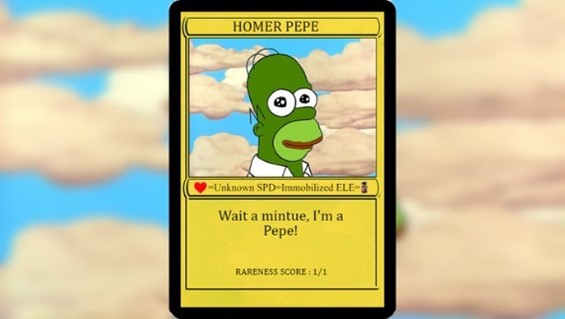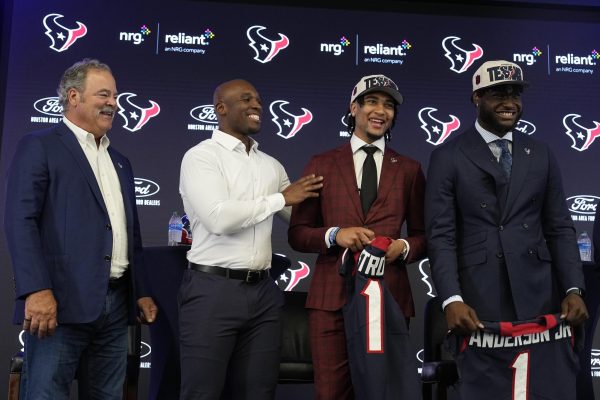Confusion Behind NFT’s
Newest crytocurrency brings big bucks to owners

This NFT of Homer Simpson and Pepe the Frog sold for $320 thousand earlier this year. The picture is a one-of-kind which helps to explain the price tag. The card seller was Peter Kell and the maker is Matt Furie.
When it comes to art, everyone knows the Mona Lisa or the Last Supper, but when it comes to non-fungible tokens, it seems like we are all in the dark.
Non-fungible tokens have been in the news numerous times in the past couple of months. There have been articles criticizing and some cheering the new cryptocurrency. But what is an NFT, and why are they worth millions?
Whether it’s a sculpture of a few angels or Homer Simpson as Pepe the Frog selling for hundreds of thousands or even millions, they all have one thing in common. They are all produced and bought online. With none of these pieces ever being tangible.
For many, a concept like this is hard to understand, especially for people in the art scene. However, this construct has become much bigger than just the art locale. This radical idea has crossed barriers into the crypto world as well.
“The idea of an NFT is very confusing to me,” senior Gustavo Gomez said. “I really don’t get the hype around it. Although, it looks like you can make a boatload of money off it.”
Let’s get down to the specifics. NFT’s or non-fungible tokens are a different type of crypto than Bitcoin. Non-fungible means the art is unique and cannot be replaced unlike Bitcoin or the dollar. For example, if you traded a Homer Simpson Pepe the Frog art piece like the one pictured above, you would get something totally different, like an art piece of Tom Brady. To sum it up, nothing is identical.
However, NFT’s are not limited to art. They can be music, drawings or anything that can be distributed through digital means. An NFT can be so random, in fact, Twitter CEO Jack Dorsey sold his first ever
Tweet as an NFT for $2.9 million.
Alternatively, the overall census is that NFT’s are a way for collectors to buy digital art, not just old tweets and music.
Yet, one of the many questions that seem to arise around this innovation is why are people buying NFT’s?
Many experts are pointing to a distrust in the dollar as the pandemic continues into the new year and a surging price in Bitcoin that has activated this current climate.
Nevertheless, a gaping problem with the concept of NFT’s has outsiders and experts alike doubting the legitimacy of NFT’s. The primary challenge to the success of NFT’s is convincing investors that not just anyone could simply copy and paste the image and have it for free, therefore saving them $10 to $70 million.
“NFT’s in general look like a really bad investment,” senior Adam Rakrouki said. “If I can copy the image and have it for myself, what’s the point of buying it?”
The conflicting argument is that the person who purchases the piece will have sole ownership of the art. Though, does that really matter if millions of people can have access to that same image on the internet?
The future for NFT’s looks uncertain. The next few years will be critical in solidifying a firm market for the idea. However, skepticism like this is all too familiar to the crypto. With Bitcoin being called a façade a decade ago and only one Bitcoin is now worth approximately $55 thousand, anything is possible.
Entering the new digital age, NFT’s will continue to make headlines. Even so, whether those headlines will be positive or negative, no one is sure.
A striking similarity between the new digital age and the old one is that back in the late ’90s and early 2000s, the internet was called a trend by many, and it was something so revolutionary and out there that the
regular person was both confused but intrigued by it. With that, NFT’s and crypto in general have the same hype and uncertainty around them.
“I think NFT’s could become as mainstream as Bitcoin in the future. Although, I think it’ll be very challenging,” senior William McCrory said.















